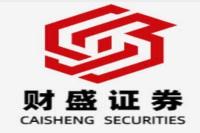People's Bank of China (PBOC) Open Market Operations: A Deep Dive into the December 2024 Reverse Repo
Meta Description: People's Bank of China (PBOC) reverse repo, open market operations, liquidity, monetary policy, interest rates, 7-day reverse repo, China's economy, financial markets.
Whoa, hold onto your hats, folks! The People's Bank of China (PBOC), the central bank of the world's second-largest economy, just made a significant move in its monetary policy. On December 20th, 2024, they conducted a whopping 1016 billion yuan (that's over $140 billion USD!) 7-day reverse repurchase agreement (repo) operation at a fixed interest rate of 1.50%. This isn't just some small-scale tweak; it's a bold statement about the PBOC's intentions for maintaining ample liquidity within the Chinese banking system. This action sends ripples across global financial markets, affecting everything from the yuan's exchange rate to the borrowing costs for businesses and consumers. We'll unpack this complex maneuver, exploring its implications for China and the broader global economy. Are you ready to dive into the fascinating world of Chinese monetary policy? Let's unravel the mystery behind this significant injection of liquidity and what it means for you, the investor, and the everyday citizen in China. This isn't just about numbers; it’s about the pulse of a nation's financial health. We'll explore the intricacies of the PBOC's actions, analyze potential future moves, and discuss the broader economic climate shaping these decisions. Get ready for an in-depth analysis that will provide you with a clearer understanding of the intricacies of Chinese financial markets. Prepare to be informed, enlightened, and perhaps even slightly amazed by the sheer scale of this operation!
People's Bank of China (PBOC) Reverse Repo Operations
The PBOC's December 20th, 2024, operation involved a reverse repurchase agreement (repo), a crucial tool in open market operations. Let's break it down: the PBOC essentially lent money to commercial banks. These banks, in turn, provided the PBOC with government securities as collateral. After seven days, the banks repurchase these securities, effectively repaying the loan plus interest. This seemingly simple transaction has profound implications for the entire financial system.
Why did the PBOC inject such a massive amount of liquidity? Several factors likely contributed. Firstly, it's a proactive measure to ensure sufficient liquidity during potentially volatile periods. Think of it as adding extra fuel to the economic engine—a safety net to prevent any unforeseen financial hiccups. Secondly, this move might be a response to anticipated year-end funding needs of commercial banks, ensuring they can meet their obligations without undue stress. Finally, maintaining ample liquidity helps keep interest rates stable, supporting economic growth and preventing any sudden credit crunches.
The 1.50% interest rate itself is significant. It reflects the PBOC's assessment of the current economic climate and its desired level of monetary easing or tightening. A lower rate suggests a more accommodative stance, encouraging borrowing and stimulating economic activity. Conversely, a higher rate signals a tightening stance, aiming to curb inflation.
Understanding the Mechanics of Open Market Operations
Open market operations (OMO) are the PBOC’s primary tool for influencing money supply and interest rates. These operations, including reverse repos, are conducted to manage liquidity in the banking system and achieve monetary policy objectives. The PBOC's actions directly impact the availability of credit, affecting borrowing costs for businesses and individuals. This, in turn, influences investment, consumption, and overall economic growth.
Consider this analogy: Imagine the banking system as a network of interconnected pipes carrying water (money). The PBOC acts as the master valve, controlling the flow of water (liquidity) through the system. By using OMOs like reverse repos, the PBOC can increase or decrease the amount of water in the pipes, adjusting the overall pressure (interest rates) within the system.
Here's a simple table summarizing different types of OMOs and their impact:
| Type of OMO | Impact on Money Supply | Impact on Interest Rates |
|----------------------|-------------------------|--------------------------|
| Reverse Repo | Decreases | Increases |
| Repo | Increases | Decreases |
| Open Market Purchase | Increases | Decreases |
| Open Market Sale | Decreases | Increases |
The Significance of the 7-Day Tenor
The PBOC's choice of a 7-day tenor for the reverse repo is also noteworthy. This relatively short maturity allows for greater flexibility in managing liquidity. The PBOC can adjust its monetary policy more swiftly by conducting frequent operations with shorter tenors, allowing for responsive adjustments to changing economic conditions. Longer-term operations, on the other hand, would commit the PBOC to a particular policy stance for a longer period.
Impact on China's Economy and Global Markets
The PBOC's actions have significant implications for both the Chinese and global economies. Within China, the increased liquidity should support lending to businesses and consumers, potentially boosting investment and consumption. This could lead to a more robust economic recovery, especially considering the recent economic challenges faced by China. However, there's a delicate balance. Too much liquidity could fuel inflation, while too little could stifle growth. The PBOC's skillful navigation of this balance is crucial.
Globally, the move could affect exchange rates, particularly the value of the yuan. Increased liquidity within China could potentially put downward pressure on the yuan if there's significant capital outflow. Moreover, the PBOC's decision influences investor sentiment towards emerging markets, impacting global capital flows and investment decisions.
Frequently Asked Questions (FAQs)
Here are some frequently asked questions about the PBOC's reverse repo operation:
Q1: What is a reverse repo?
A1: A reverse repo is a short-term borrowing arrangement where the central bank borrows money from commercial banks, providing government securities as collateral. The banks repay the loan plus interest after a specified period.
Q2: Why did the PBOC conduct such a large reverse repo operation?
A2: The large-scale operation likely aims to ensure sufficient liquidity in the banking system, manage year-end funding needs, and maintain stable interest rates.
Q3: What is the significance of the 1.50% interest rate?
A3: The 1.50% interest rate reflects the PBOC's assessment of the current economic situation and its desired level of monetary easing.
Q4: How does this affect the Chinese economy?
A4: The increased liquidity should support lending, stimulating investment and consumption, potentially boosting economic growth.
Q5: What are the global implications of this operation?
A5: The operation could influence the value of the yuan and investor sentiment towards emerging markets, impacting global capital flows.
Q6: What's the risk of this action by the PBOC?
A6: The main risk is potential inflation if the increased liquidity is not managed carefully. The PBOC needs to strike a balance between stimulating growth and controlling inflation.
Conclusion
The PBOC's December 20th, 2024, reverse repo operation was a significant event with far-reaching consequences. It showcases the central bank's commitment to maintaining financial stability and supporting economic growth. While the move offers a boost to the Chinese economy, the PBOC must carefully manage liquidity to avoid fueling inflation. The global implications are equally significant, affecting exchange rates and investor sentiment. This operation serves as a reminder of the crucial role central banks play in shaping the global economic landscape. Keeping a close eye on the PBOC's future moves will be essential for understanding the trajectory of both the Chinese economy and global financial markets. Stay tuned, the story is far from over!



